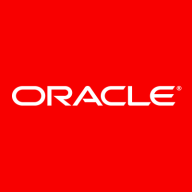

SQL Server and MySQL are major contenders in the relational database category. SQL Server is advantageous due to its advanced analytics and high availability features, while MySQL offers scalability and flexibility at a lower cost.
Features:SQL Server is renowned for its dynamic resource allocation, Online Analytical Processing (OLAP), and comprehensive Data Transformation Services, contributing to powerful analytical capabilities and a supportive community. MySQL, favored for its scalability and simplicity, supports multiple engines and is optimal for web applications, contributing to its widespread adoption in various environments.
Room for Improvement:SQL Server's high costs and compatibility issues on platforms other than Windows present challenges. Its licensing complexity also requires streamlining. MySQL can become cumbersome with advanced RDBMS features and large-scale data operations, and its development tools could benefit from enhancement.
Ease of Deployment and Customer Service:Both SQL Server and MySQL are versatile for deployment across cloud and on-premises environments. SQL Server is slightly preferred for enterprise support but is noted for responding slowly. In contrast, MySQL benefits from its community-driven support, although it can be less centralized and slower response-wise.
Pricing and ROI:SQL Server, although expensive, particularly in its enterprise version, provides a comprehensive feature set that offers greater ROI for larger deployments. Conversely, MySQL is a cost-effective option with its open-source model appealing to small to mid-sized businesses, yielding significant savings and a promising ROI over time.
All applications need our repository to provide services for our online business or our customers, so the return is good.
We have no issues and usually receive timely responses.
When we created support tickets, the experience was very positive.
Meeting scalability requirements through cloud computing is an expensive affair.
The server where we installed it has grown from 64 gigabytes in RAM to 256 gigabytes, demonstrating significant scalability capabilities.
We face certain integration issues, especially when we integrate the database with security solutions like IBM QRadar.
The load balancer, MySQL LB, which is used to connect to the application, lacks clear documentation.
Oracle could improve on scalability.
It could be more beneficial if MySQL can enhance its data masking functionality in the same way it has improved data encryption.
I would appreciate using Microsoft Pro as it can integrate with Excel or, with a simple query, consume information from the database using Microsoft Excel.
When we consider the price for replication in another site, the pricing becomes prohibitive.
Oracle has different components, so if you need security, you have to procure a different license, but here everything is inbuilt and it's not costly.
With Oracle, we have to buy another solution for encryption and masking, but MySQL supports native encryption, which enhances our return on investment.
It's an inbuilt feature of the database itself, and you don't have to purchase an additional license for the replication.
It allows programming, writing stored procedures, creating views, constraints, and triggers easily.
The always-on feature provides high availability in SQL Server.
I have been working with SQL Server for a long time, and it works well for me as I am using it in different applications, such as web applications, Windows applications, or the data warehouse reporting.
| Product | Market Share (%) |
|---|---|
| SQL Server | 15.5% |
| MySQL | 7.5% |
| Other | 77.0% |


| Company Size | Count |
|---|---|
| Small Business | 73 |
| Midsize Enterprise | 31 |
| Large Enterprise | 61 |
| Company Size | Count |
|---|---|
| Small Business | 121 |
| Midsize Enterprise | 58 |
| Large Enterprise | 112 |
MySQL is an open-source database known for its ease of use and high performance. It offers features like replication and clustering, making it ideal for diverse applications. Its cost-effectiveness and LAMP integration are key advantages for businesses.
MySQL supports a variety of languages and platforms, providing reliable, scalable data management. Its graphical interface and LAMP architecture integration enhance its usability, while community support further strengthens its appeal. Challenges include scalability issues with large databases, lack of advanced clustering, and limited high-availability features. Complex queries may affect performance, and integration can pose difficulties. The outdated interface and insufficient documentation are also concerns, along with replication and backup reliability issues.
What are MySQL's key features?MySQL is widely implemented in industries such as web development, e-commerce, and finance. It's used for managing dynamic websites, powering e-commerce platforms, and supporting financial applications. Its compatibility with PHP and cost-effectiveness make it suitable for CMS platforms like WordPress. With cloud services integration, MySQL is a backend choice for scalable applications in various sectors.
SQL Server is a relational database management system (RDBMS) by Microsoft. The product's main purposes are to store data and retrieve it as requested by other software applications - on the same computer or on another computer across a shared network. The solution is built on top of Structured Query Language (SQL), which is a standardized programming language used for relational database management.
The product is tied to Transact-SQL (T-SQL), which is an implementation of SQL from Microsoft that adds several proprietary programming extensions to the standard language. SQL Server is built similarly to other RDBMS products, as its structure is a row-based table that connects related data elements in different tables to one another. One of its most important components is the SQL Server Database Engine, as it controls data processing, storage, and security. Beneath the Database Engine is the SQL Server Operating System, which is used for memory and I/O management, locking data to avoid unneeded upgrades, and job scheduling.
The solution has four editions with different sets of services and tools. They include:
The first two are available for free and are typically utilized by smaller companies, as they work with fewer functions and storage. The second two editions are generally used by bigger organizations and enterprises and offer more features.
The solution has several functions through which users can facilitate different data-related processes. These include:
SQL Server Services
SQL Server has a wide range of add-on services that provide additional benefits beyond database management. These services include:
SQL Server Benefits
The solution has many benefits for users. These include the following:
Reviews from Real Users
A president at a consultancy evaluates SQL Server as a veteran solution with critical log shipping feature.
Harkamal S., a user at a manufacturing company, rates SQL Server with a high mark because it is a stable, scalable, and easy-to-deploy solution that pretty much covers everything.
We monitor all Relational Databases Tools reviews to prevent fraudulent reviews and keep review quality high. We do not post reviews by company employees or direct competitors. We validate each review for authenticity via cross-reference with LinkedIn, and personal follow-up with the reviewer when necessary.